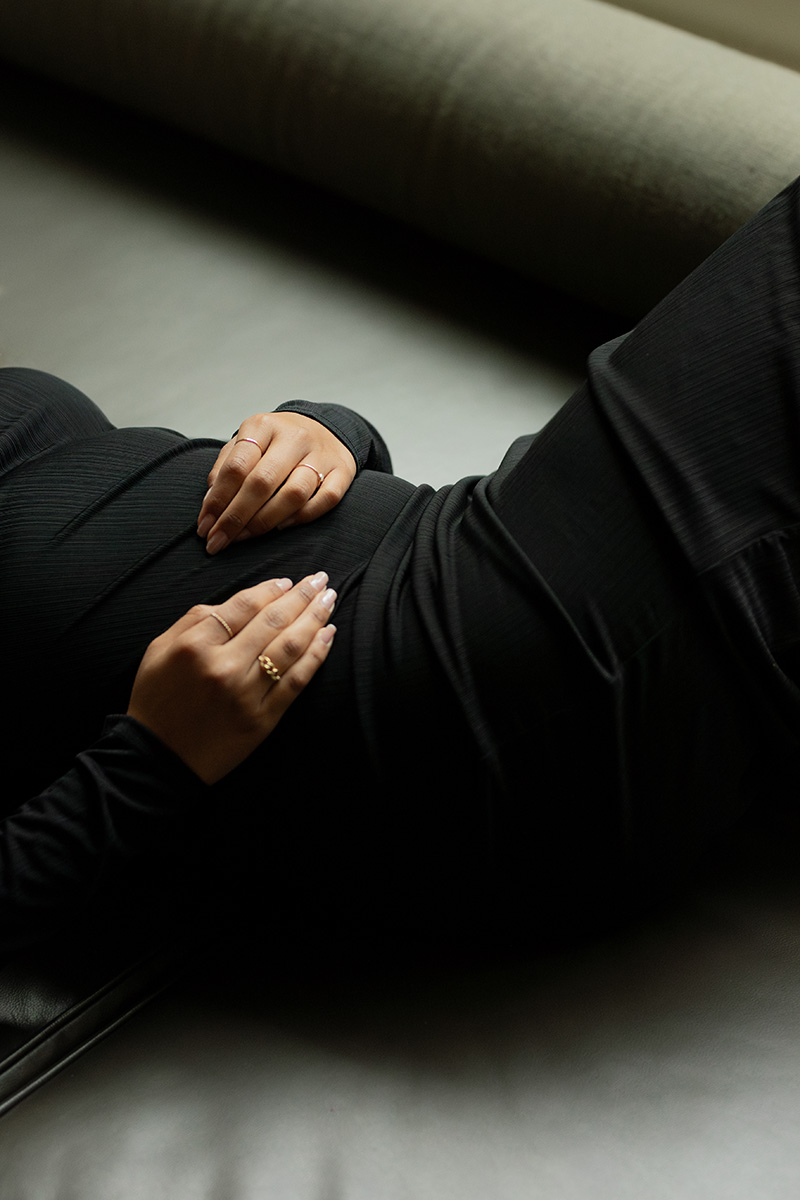
How To Know If Your Libido Is Spontaneous Or Responsive
One day, while catching up on podcasts as I was folding laundry, a spicy topic piqued my interest. The host was interviewing sex educators and researchers Lauren Fogel Mersy, PsyD, LP and Jennifer A. Vencill, PHD, ABPP about the effect of the mental load on libido. As I listened, my eyes widened. I started to realize just how little I knew about the topic. One after another, my received truths about sexuality started to break down.
Prior to this listening sesh, my personal, limited, and mistaken knowledge about libido consisted of the following —
- Some people have “high libido” (want sex more often), and some have “low libido” (desired sexy time is occasional, at best).
- It’s men that have a naturally higher libido, and women that usually have a lower libido.
- High-libido men prefer women with similar sexual desires.
- If you want to increase your libido, this is best done with medications that claim to “get you in the mood.”
Man, was I wrong! All of these beliefs I’d held about the nature of “libido” — which I picked up somewhere along the way in my sexual education or from advertisements — were challenged by the conversation I was hearing.
“One after another, my received truths about sexuality started to break down.”
For starters, I began to realize that our culture oversimplifies and polarizes libidos, typically along gendered lines. In other terms, women are one way and men are another. And the assumption is that these are static across changes to our lifestyle, relationships, and bodies throughout life. That podcast and my follow-up research reading Mersy and Vencill’s book, “Desire: An Inclusive Guide to Navigating Libido Differences in Relationships,” ushered me into a new way of understanding of my libido, how it interacts with my partner’s, and how both can shift and change.
An introduction to spontaneous and responsive libidos
In Mersy and Vencill’s view, libido isn’t so “hot” or “cold” — nor is it totally dependent on assigned genders. They separate libido into two major buckets: Spontaneous and responsive, where a variety of factors influence which camp you fall into. A person’s libido operates on a spectrum with tendencies or styles that are sometimes ingrained, but also influenced by shifting internal and external factors. Below, we’ll unpack how to identify and work with your own spontaneous or responsive libido — but first, a little background on how we got here.
“A person’s libido operates on a spectrum with tendencies or styles that are sometimes ingrained, but also influenced by shifting internal and external factors.”
Mersy and Vencill’s research references the groundbreaking work of Dr. Rosemary Basson, a physical and sexual medicine specialist who discovered and presented the “Non-Linear Model of Female Sexual Response” in 2000. It was Dr. Basson’s model that first presented the two styles of libido, spontaneous and responsive. Basson developed the idea of responsive desire after hearing from her female patients that they weren’t interested in initiating sex, but instead they found themselves gradually opening up to their partner through intimate touching or talk. Basson’s research emphasized consideration of a woman’s level of emotional intimacy, stimulus, self-image, and relationship satisfaction when it comes to her level of desire.
Dr. Basson identified that this could be the case for men, too — and Mersy and Vencill have continued to develop the idea. Men and women, regardless of gender assignment or sexual orientation, vary a great deal in libido preferences both in the moment and throughout all seasons of life. Most importantly, these differences and preferences are normal, acceptable, and almost always manageable in partnerships. Knowing which one you trend toward can be helpful, creating stronger sexual communication with yourself and your partner.
“Men and women, regardless of gender assignment or sexual orientation, vary a great deal in libido preferences both in the moment and throughout all seasons of life.”
In their book, Mercy and Vencill discuss “libido” (Latin for “lust” or “desire”) as a mental or physiological aspect of sexuality and, although often referred to as a person’s “sex drive,” they stress it’s not really a drive at all but rather an incentive-motivation system. Libido often needs customized incentives or motivations to reinforce a desire to engage in sexual activity. There are so many elements and factors that can affect a person’s desire, sexual health, and satisfaction, including mental and physical “brakes” and “accelerators.” (If that interests you, you can find a longer discussion in research outlining what is called the Dual Control Model.)
So, if this sounds familiar to you, read on to learn more about the types of libido and how to work with them.
Responsive libido: “Hold me, please!”
Mersy and Vencill describe responsive libido as an oven that needs some time to preheat. Those with responsive libido may find that sex is rarely top of mind. To be in the mood, they need pleasurable mental and/or physical arousal or affection to activate their desire. People with responsive libido can be turned on by consensual stimulation but often also crave that sense of closeness with their partners that is free of any pressure.
According to Emily Nagoski, Ph.D. and author of the New York Times best-selling book “Come as You Are,” approximately 5% of men and around 30% of women have what Basson’s research classifies as a responsive, not spontaneous, libido.
“People with responsive libido can be turned on by consensual stimulation but often also crave that sense of closeness with their partners that is free of any pressure.”
Unfortunately, the constant Hollywood portrayal of and exposure to spontaneous libido has led many to believe that if sexual desire leans responsive, aka the fire needs more stoking, something may be wrong with you or the relationship. That is just not the case. In fact, many people don’t ever experience spontaneous desire at all, and that is A-OK!
What’s needed to invoke responsive libido is different for each person, and a person with this libido style may want to take time to get in tune with what seems to turn them on. As Vencill and Mersy put it, “The amount of time and the context required to build desire varies considerably from person to person, making it an important area of self-discovery in your libido journey.”
Spontaneous libido: “Let’s DO this!”
With spontaneous libido, there is no need for the oven to preheat. This is the kind of sexual desire that sets the scene for many a steamy movie or book passage — quick, mutual attraction followed by passionate physical contact and little to no foreplay. In “Desire,” Mersy and Vencill compare this type of libido to a microwave: “Quick to heat up.” Someone with this type of libido may feel turned on with no outside stimulation whatsoever. They just feel it come over them.
“Someone with this type of libido may feel turned on with no outside stimulation whatsoever.”
This type can also experience physical signs of arousal at the same time that the mental spark ignites. Therefore, they can be ready to engage in consensual sexual activity quickly. Nagoski finds that around 70% of men have this type of libido style. In comparison, for women, it’s more like 10–20% that experience regular spontaneous desire.
Despite its common picturesque portrayal, there is still a ton to be discovered regarding the inner workings of the how and why of spontaneous libido, and it appears to be influenced by both hormones and neurotransmitters. Spontaneous libido style may also fluctuate over time. Women, especially, may even find that the flow of spontaneous desire they felt during the honeymoon phase of a relationship (when it’s most common) wanes or even disappears while in long-term relationships.
Contextual libido: A third possibility
Speaking of life’s challenges, both spontaneous and responsive libido styles can shift or be stifled during some new or stressful seasons of life. Think of pregnancy and postpartum; new jobs or illnesses; martial spats; any period of ongoing stress or increasing life responsibilities. As most have likely experienced, these factors can become major “brakes” on the libido pedal.
“Proper and comfortable context is key to this style of libido.”
Nagoski has developed a third category that she calls contextual libido. Circumstances may need to be just right for there to be any desire — even for a solo session. Proper and comfortable context is key to this style of libido. And what that looks like is different for everyone. It can include elements like harboring a healthy self-image, being in a safe environment, finally getting that baby to sleep through the night, not being stressed at work, or feeling confident and happy about our bodies.
Contextual libido differs from responsive libido since it doesn’t depend so much on a partner to set the mood, but on the ambient setting and environment.
How to manage libido differences in partnerships
Libido styles and desire levels among couples are rarely the same long-term and quite possibly never the same from the get-go. It’s pretty much guaranteed to be the exception, not the rule, when couples share the same desire levels. But, in most cases, there is no need for concern with mismatched libido styles. The good news: Different libido styles can play nicely together.
“The good news: Different libido styles can play nicely together.”
“The goal here is not to turn microwaves into ovens or vice versa,” Vencill and Mersy say. “The goal is to understand better what works for you and how to use that knowledge in your relationship.” In other words, self-education, communication, and understanding lead to satisfaction even when you may not have the same kind of desire.
Mersy and Vencill recommend starting a sexual health journal to help you process your sexual experiences and learn more about your libido style. Take note of what factors make up your “brakes” and “accelerators,” and then plan to communicate these with your partner(s).
If you discover you are more of an oven than a microwave (i.e., responsive rather than spontaneous), the following question may be helpful as you consider engaging in sexual activities. Ask yourself, “Am I willing to turn the oven on?,” instead of “Is the oven already on?” — which is rarely the case with responsive desire. And know that, as Mersy and Vencill write, “Willingness can lead to desire, arousal, pleasure, none of those, or all of those.” Continue to communicate your willingness and interest throughout the sexual encounter, and stop whenever you no longer feel interested and/or comfortable.
My takeaway
Learning about different libido styles was a game-changer for me. This new model allowed me to lessen the guilt I was carrying for not always feeling fire for my (very handsome) husband. I am no longer self-conscious about a lack of initiation on either of our parts because, well, life.
“Recognizing and honoring your libido style is just the tip of the iceberg.”
I realize now that recognizing and honoring your libido style is just the tip of the iceberg when it comes to unlocking individual potential for sexual health and pleasure. The topic of sexual health is complicated and wildly fascinating, and Mercy and Vencill’s book, as well as Dr. Basson and Nagoski’s work, are chock-full of deep and insightful knowledge, experience, advice, and the fascinating science and research that back up their claims.
So, let discovering your libido type be the start of a deeper engagement with your sexual nature, preference, and proclivities. Don’t be shy!
Randi Donahue is a Contributing Editor at The Good Trade. She is a freelance writer who lives on the Gulf Coast of Florida and is fortunate to live right next to a glorious nature preserve and a few miles from a white sandy beach. She and her family are passionate about nature, health & wellness, and sustainable living and believe the path to a healthy and prosperous life requires authenticity, kindness, and a whole lot of fresh air.




